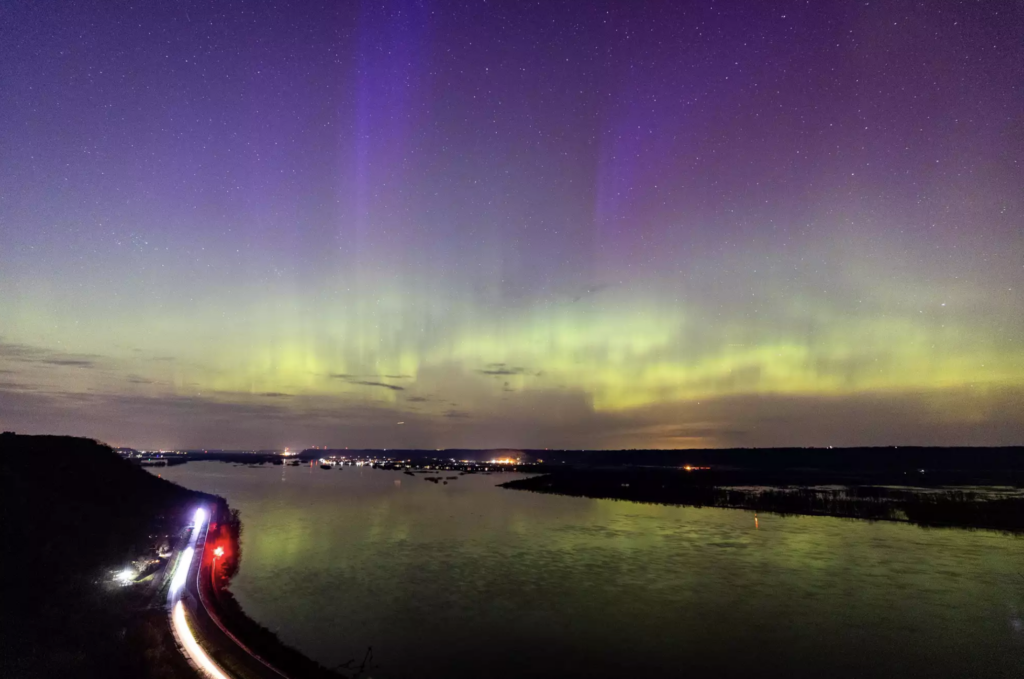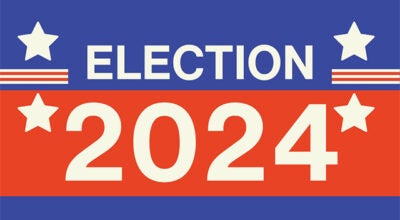Tips to improve your chances of seeing the northern lights
Published 3:50 pm Thursday, November 30, 2023

- Northern lights appear above Lock and Dam number 5 on the Mississippi River near Winona on April 23. Ben Hovland/MPR News
|
Getting your Trinity Audio player ready...
|
The northern lights are notoriously difficult to predict. But conditions appear favorable for a show in the night sky late Thursday into early Friday — and if they appear, MPR News meteorologist Sven Sundgaard says they might be visible across the entire state.
Mostly clear conditions in the forecast would make for easy viewing across the state.
Space weather predictions from the National Oceanic and Atmospheric Administration are calling for a Kp index of 7 — that’s a measurement used to predict solar weather activity; it ranges from 0 to 9, with higher numbers indicating a better chance of the northern lights.
“Kp index of 7, that’s pretty high, we don’t get that very often,” Sundgaard said. “That means that lights could be visible all the way into Iowa and Illinois. The peak time anywhere between 9 p.m. (Thursday) and 3 a.m. (Friday) morning, so overnight tonight, but especially right around that midnight to 3 a.m. timeframe.”
If you want to try and catch the view, here are some tips from MPR News editor Andrew Krueger and MPR News photojournalist Ben Hovland.
Scout ahead of time to find your spot
We’re cutting it close with this (considering the chances are high this evening), but if you can find a location far from city lights and with a clear view to the north, your chances of seeing the northern lights will be better. A view from a southern shore of a lake is a great option, but farm fields and pastures work, too.
“The darker the night sky, the better the chance of seeing the northern lights,” said Krueger, who also shared some tips in this 2019 article. “If it’s a really strong northern lights display, you might be able to see it from the Twin Cities, but you’ll get a much better view if you can get away from all that light pollution.”
The same applies for people in Duluth, or St. Cloud, or Rochester or any other city across Minnesota — getting away from city lights will increase your odds of seeing the northern lights.
Use a trusted source for alerts on aurora conditions
Both Krueger and Hovland suggest monitoring a few different websites to check on conditions:
- NOAA’s Space Weather Prediction Center
- SpaceWeather.com
- Astro Bob blog by former Duluth News Tribune photo editor and Minnesota astronomy expert Bob King
- University of Alaska Fairbanks’ Geophysical Institute’s aurora forecast
There also are groups of aurora-watchers on social media, who post updates on northern lights sightings from across the Midwest and Great Lakes region.
If you’re planning photos, bring a tripod (and other equipment)
Hovland shared a previous aurora-chasing session in 2022, and gave a breakdown on his equipment (find his trip notes and tips on his previous post.)
To truly capture the northern lights in a photo, you’ll need a slower exposure time. That means you’ll need to mount your camera on a tripod, and you’ll need a shutter speed measured in seconds rather than fractions of a second.
In 2022, Hovland noted he tried a longer exposure, but not too long.
“For the July aurora display, I used the following settings: lens set to 16mm, aperture at f/2.8, ISO 6400, and a 6” shutter speed,” Hovland wrote. “Generally, I set my exposure to keep the shutter speed as short as possible. This means opening up the aperture and raising the ISO, or digital sensitivity.“
Don’t forget to prepare for colder weather, and be ready to stay out for an extended period of time — maybe throw the camp chair in the trunk.
Get out there!
Simply put, you won’t see anything with a roof overhead. But that’s easier said than done when it’s late or cold outside.
If you stay up late — or get up early — take a look in the sky overnight, and you may be rewarded with a truly spectacular sight.




